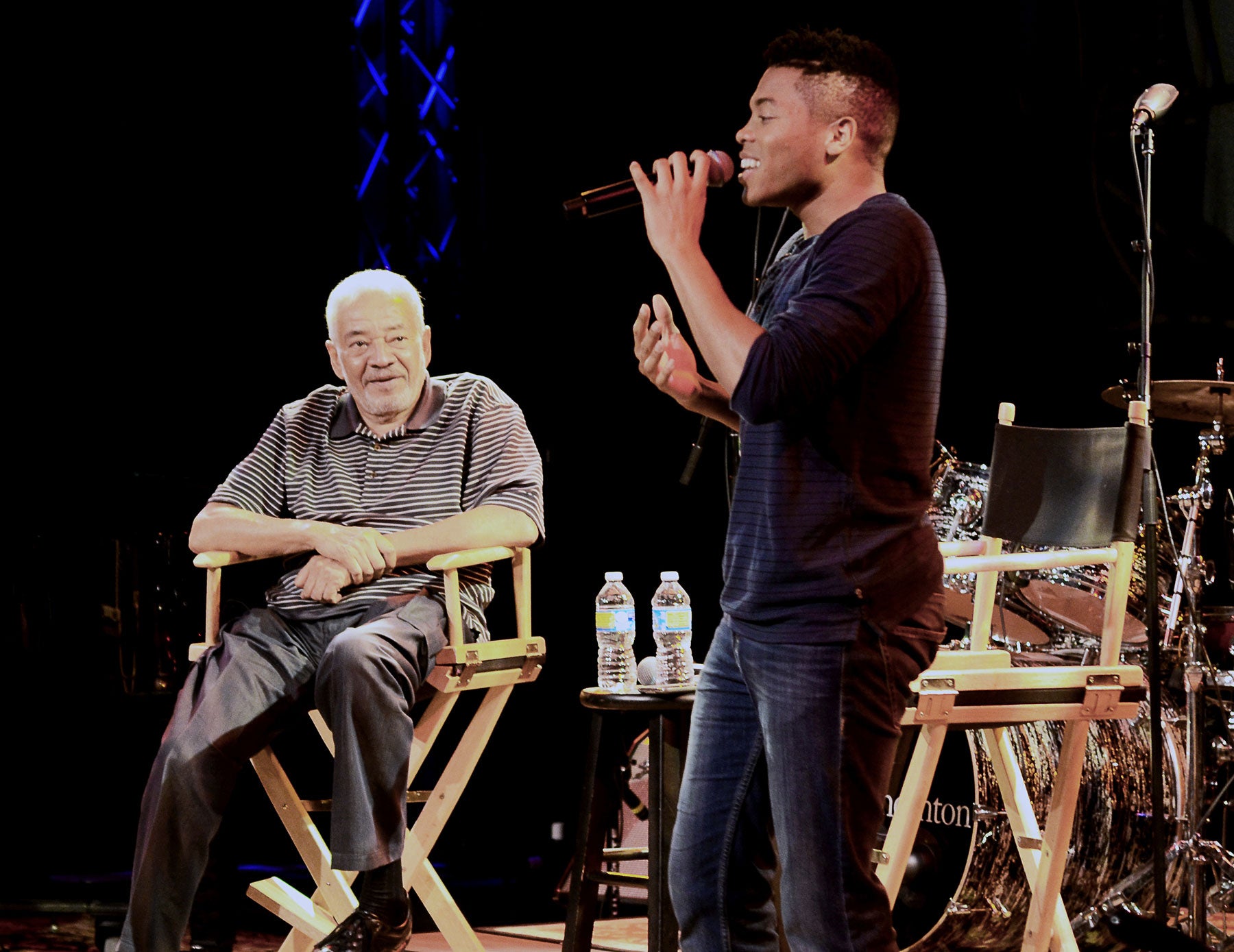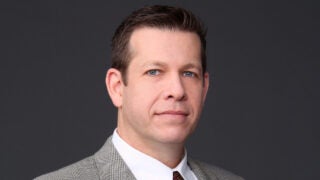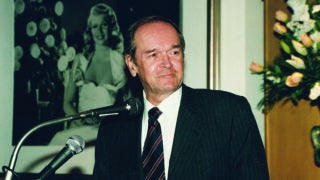Through a Bill Withers tribute video, USC music professors spotlight how to perform remotely
Faculty in the Popular Music Program collaborated virtually on a musical eulogy aimed at lifting up their students — and themselves.
After USC Thornton School of Music students and professors isolated at home in mid-March, classes moved online as lectures and private music instruction continued. But what about ensemble playing, the backbone of both the school and USC Thornton’s 10-year-old Popular Music Program? How could bands still perform together?
Program Director Patrice Rushen and four of her faculty members have showed their students — and a growing digital fan base — how it’s done. In a tribute to the late Bill Withers, the five of them used an iPhone app to collaborate remotely on a lesser-known Withers’ song, “Kissing My Love,” that they posted to Instagram. In just two days, with no promotion, it prompted an avalanche of positive comments. “This is some Grade A, Unadulterated, Quarantined, Stinky, Hat-Wearin’ Professor FUNK Right Here!!!!” was one accurate appraisal.
Rushen said making the video was an effort to lift up their students and themselves.

“After things kind of settled in as to what we were going to do about our students, we found ourselves at a loss about what we were going to do about ourselves,” she said. “All the other things we do, our gigs, had been canceled or postponed. And we needed to play, especially because we were seeing our friends — our peers, people we really respected — falling ill or passing away.”
Withers, who died March 30, was a guest several years ago at the program’s weekly Popular Music Forum, where music industry luminaries speak candidly with students and answer questions. At Withers’ talk, students began a tradition of playing a few of the guest’s songs in his or her honor.
“It lets people who have become successful know that what they have done has become a course of study for us, to examine the songwriting style, the lyrics, the music,” Rushen said.
If you look up any of the professors’ resumes, it’s a who’s who of music.
Sean Holt
Rushen — a celebrated pianist, musical director and artist — and Paul Jackson Jr. — a longtime colleague and one of the most recorded guitarists in popular music history — had both worked with Withers professionally. Having Popular Music Program professors who’ve collaborated with industry icons is not at all unusual, said Sean Holt, a professor in the program who did the vocals on the video.
“I have to walk around pinching myself daily at school because I am surrounded by titans of popular music,” he said. “If you look up any of the professors’ resumes, it’s a who’s who of music. It’s usually easier to name who they haven’t worked with than who they have.”
Students adjust to performing for an iPhone
It took only about a week to create the video, despite the teachers’ still-full class schedules. A chart was sent to the five participants, who each recorded their part at their homes on iPhones using the Acapella app, the same technology that students in performance classes were asked to use during the shutdown.
“There were some eye rolls because Acapella had been out there a while and students didn’t associate it with industry-level standards,” Holt said. “We had to remind them that we weren’t trying to create Pro Tools records. We were simply trying to see them play a song start to finish, albeit a virtual one that can happen at the same time.”
After one onboarding session, students quickly figured out how to make the app work, Holt said, and really impressed the faculty at the level at which they operated.
Remote collaboration exemplified in tribute to Bill Withers’ music
The Bill Withers tribute video began with Professor Will Kennedy laying down a drum groove. He texted that to Paul Jackson Jr., who added guitar. It next went to Alphonso Johnson, who teaches bass guitar, to add the bass lines. Rushen got the file next, adding keyboards. Finally, Holt added vocals and a shaker. There were also some unplanned background vocals from Johnson’s dog, Finn, who gets his credit and a photo on one of the video tiles.
“This video represents the idea that as practitioners, professors haven’t lost touch with what it really means to be an artist and a musician,” Rushen said. She also noted that remote collaboration on music was expanding even before the pandemic. “People are using technology to send stuff back and forth, to have access to people they wouldn’t have if they were totally dependent upon having to be in the same place at the same time.”
Playing remotely can improve a student’s ensemble playing experience, she said.
“No one can play any part without knowing the entire song, without knowing what everybody else is playing — and then they have to get a good performance,” she said. Since the Acapella app doesn’t allow you to redo small bits, it’s more like a performance: “If you’re on the stage performing, you don’t get a do-over. You start and you finish. So, this checks that performance box.”
USC Thornton students, faculty find value in virtual performances
The Bill Withers Instagram video is not USC Thornton’s only virtual performance platform during the sequester. A YouTube channel, Live! From Somewhere, has 11 videos from current students and alums playing in various genres from classical to jazz to rock. A Popular Music Program senior, Tehillah Alphonso, has a video singing multiple vocal harmony parts for the song “Give You Blue.”
That’s why our ensembles are so vital: You may come in as a vocalist, but you leave as a complete musician.
Patrice Rushen
“Tehillah came into the program with a vocal emphasis, but she is a golden example of somebody being exposed to all the other areas of music-making in our program,” Rushen said. “It has led her to be one of the strongest arrangers, one of the strongest singers, a good pianist and an amazing songwriter. That’s why our ensembles are so vital: You may come in as a vocalist, but you leave as a complete musician.”
Could there be a silver lining to this sequestered creativity? Holt thinks there is for the faculty video makers.
“Working together became possible in a way that maybe it was not going to if we all hadn’t been sent home,” he observed. “This has caused some of us to take a beat and do things that we might have put off.”
Watch Tehillah Alphonso sing the vocal harmony parts for “Give You Blue”:



